More instruments to identify if you please
Thu May 05, 2016 3:56 pm
Re: More instruments to identify if you please
Thu May 05, 2016 4:14 pm
the one on the far left looks to me like G meter. I would assume that two of the engine dials are EGT and I am sure there is an oil pressure gauge and fuel flow gauge as well.
Sean
Re: More instruments to identify if you please
Thu May 05, 2016 6:50 pm
Ok, edu-ma-cated guesses from me.
The single instrument on the left is your Airspeed Indicator, with the red and white 'barber pole' needle showing VNE.
The engine instrument group on the right, top two on left hand side are the tachos, top right are the oil pressure gauges, bottom left are the EGT or TGT (depending on where the thermocouples are fitted in the engines) and the bottom right are the fuel flow indicators. The basic needs for gas turbine operation.
The single instrument on the left is your Airspeed Indicator, with the red and white 'barber pole' needle showing VNE.
The engine instrument group on the right, top two on left hand side are the tachos, top right are the oil pressure gauges, bottom left are the EGT or TGT (depending on where the thermocouples are fitted in the engines) and the bottom right are the fuel flow indicators. The basic needs for gas turbine operation.
Re: More instruments to identify if you please
Fri May 06, 2016 2:44 pm
Thanks gents! This will get me headed in the right direction.
Re: More instruments to identify if you please
Sat May 07, 2016 9:51 am
Correct answers have been given.
I know a person who worked on the B-66, if you have any other questions. He has manuals and knows the airframe well.
It's all he ever talks about.
I know a person who worked on the B-66, if you have any other questions. He has manuals and knows the airframe well.
It's all he ever talks about.
Re: More instruments to identify if you please
Sat May 07, 2016 4:09 pm
Scooby wrote:Correct answers have been given.
I know a person who worked on the B-66, if you have any other questions. He has manuals and knows the airframe well.
It's all he ever talks about.
I would love to speak with him Scooby! There are a bunch more instruments that I would like to identify if possible. I am working on the cockpit details for a customer's 1/8 scale RC model of the EB-66 and would like to get them at least moderately correct if possible. The B-66 is not a well documented airplane, at least not on the Internet.
Here is the model with the builder and test pilot.

Re: More instruments to identify if you please
Sat May 07, 2016 4:35 pm
This is from the B-66 Familiarization Manual. Incidentally, most of the manuals that I have are from http://www.flight-manuals-on-cd.com in New Zealand. They are good folks who offer a large number of manuals in PDF format for very reasonable prices.

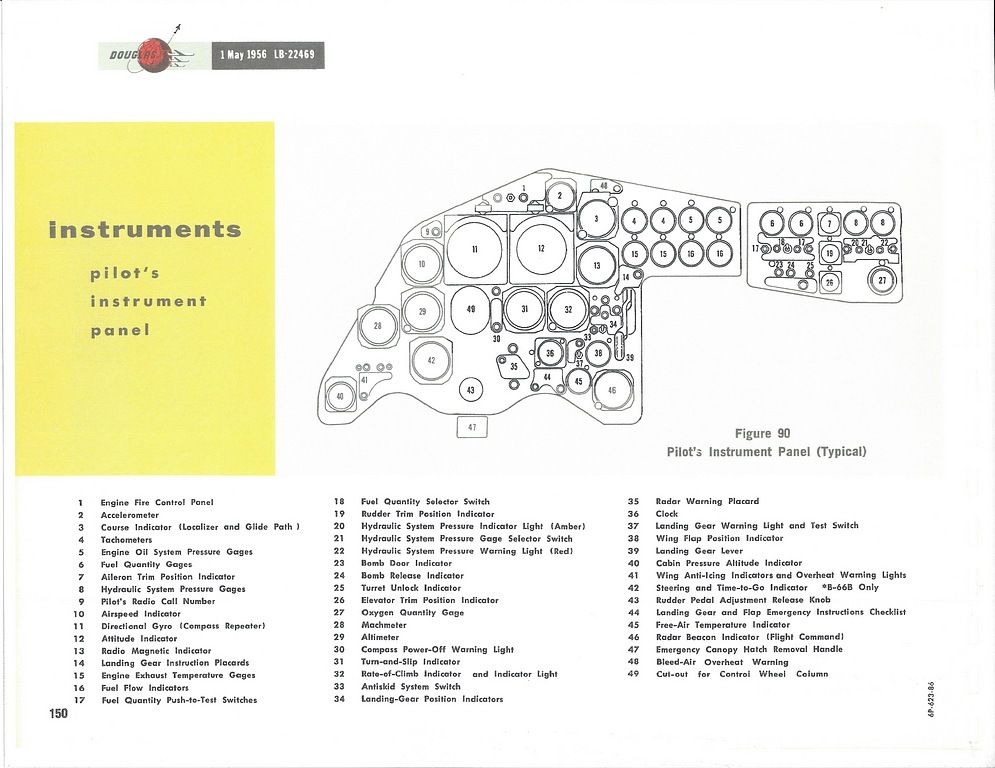
I'll post some pages from the B-66B Flight Manual in a minute


I'll post some pages from the B-66B Flight Manual in a minute
Re: More instruments to identify if you please
Sat May 07, 2016 4:40 pm
These pages show the rest of the cockpit controls for a B-66B

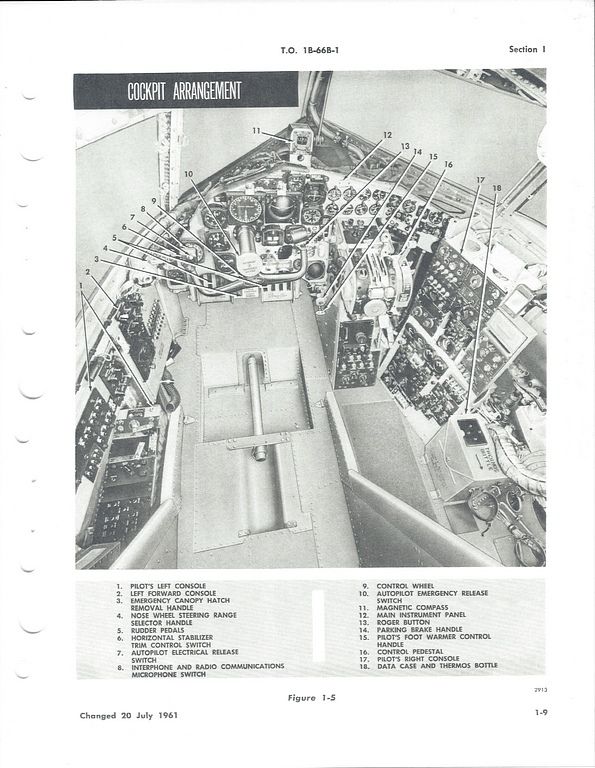
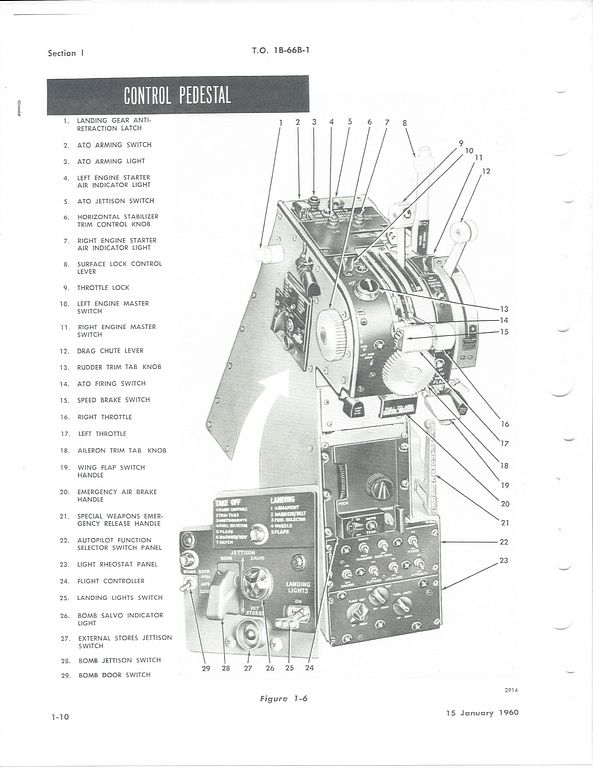

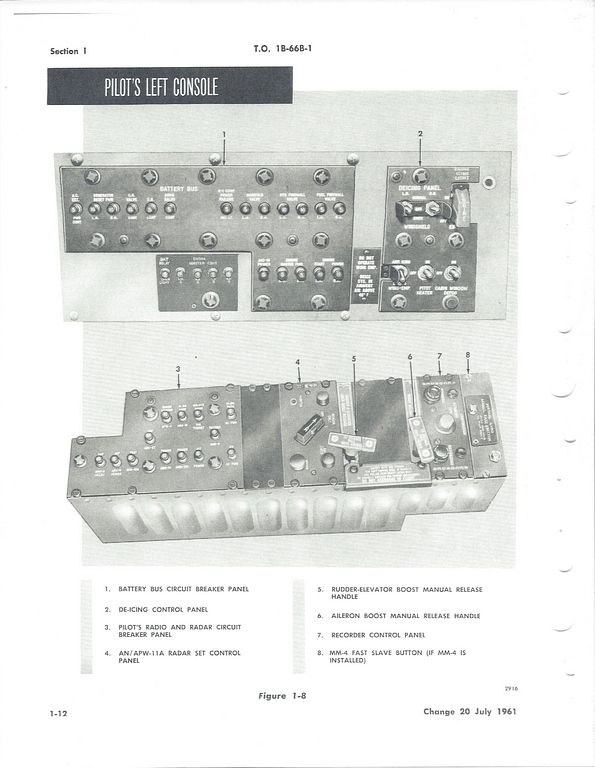


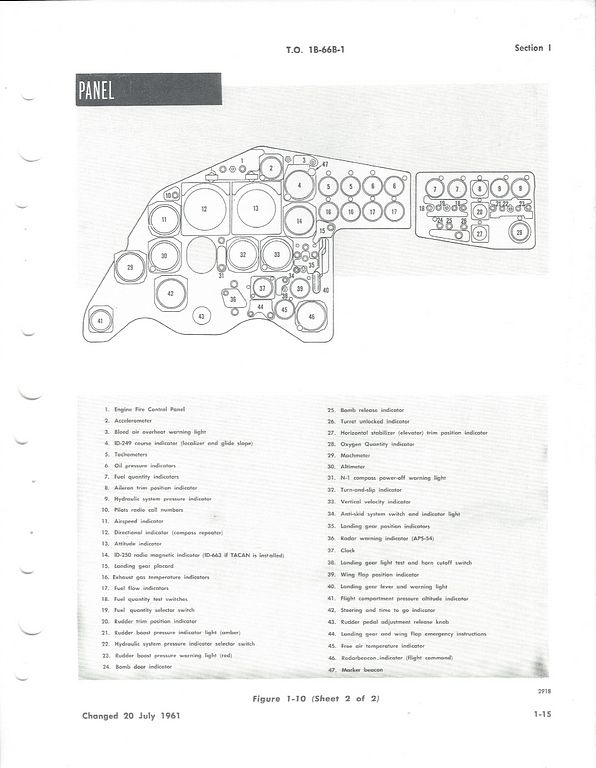








Re: More instruments to identify if you please
Sat May 07, 2016 5:11 pm

Nice!
Ducted fan or turbine?
Re: More instruments to identify if you please
Sat May 07, 2016 6:07 pm
Larry, those are fantastic! Thank you very much for taking the time to post them, it is very much appreciated.
Maxum, the model is powered with electric ducted fans. For anyone interested an exhaustive build thread for the airplane is at RC Groups, see link below.
http://www.rcgroups.com/forums/showthread.php?t=2419623
Maxum, the model is powered with electric ducted fans. For anyone interested an exhaustive build thread for the airplane is at RC Groups, see link below.
http://www.rcgroups.com/forums/showthread.php?t=2419623
Re: More instruments to identify if you please
Mon May 09, 2016 12:58 am
Basically the Poms created this. The US was very slow to follow..
This is from Wikipedia:
This is from Wikipedia:
Early history
In 1929, Jimmy Doolittle became the first pilot to take off, fly and land an airplane using instruments alone, without a view outside the cockpit. In 1937 the British Royal Air Force (RAF) chose a set of six essential flight instruments which would remain the standard panel used for flying in instrument meteorological conditions (IMC) for the next 20 years. They were:
altimeter (feet)
airspeed indicator (knots)
turn and bank indicator (turn direction and coordination)
vertical speed indicator (feet per minute)
artificial horizon (attitude indication)
directional gyro / heading indicator (degrees)
This panel arrangement was incorporated into some RAF aircraft, the 4-engined Avro Lancaster heavy bomber, but not the light single-engined Tiger Moth trainer, and minimized the type-conversion difficulties associated with blind flying, since a pilot trained on one aircraft could quickly become accustomed to any other if the instruments were identical.
This basic six set, also known as a "six pack", was also adopted by commercial aviation. After the Second World War the arrangement was changed to: (top row) airspeed, artificial horizon, altimeter, (bottom row) turn and bank indicator, heading indicator, vertical speed.
Further development
Of the old basic six instruments, the turn and bank indicator is now obsolete. The instrument was included, but it was of little use in the first generation of jet airliners. It was removed from many aircraft prior to glass cockpits becoming available. With an improved artificial horizon, including gyros and flight directors, the turn and bank indicator became needless except when performing certain types of aerobatics (which would not be intentionally performed in IMC to begin with). But the other five flight instruments, sometimes known as "the big five", are still included in all cockpits. The way of displaying them has changed over time, though. In glass cockpits the flight instruments are shown on monitors. But the display is not shown by numbers, but as images of analog instruments. The artificial horizon is given a central place in the monitor, with a heading indicator just below (usually this is displayed only as a part of the compass). The indicated airspeed, altimeter, and vertical speed indicator are displayed as columns with the indicated airspeed and altitude to the right of the horizon and the vertical speed to the left in the same pattern as in most older style "clock cockpits".
Different significance and some other instrumentation
In good weather a pilot can fly by looking out the window. However, when flying in cloud at least one gyroscopic instrument is necessary to orientate the aircraft, being either a artificial horizo, turn and slip or gyro compass.
The vertical speed indicator, or VSI, is more of "a good help" than absolutely essential. On jet aircraft it displays the vertical speed in thousands of feet per minute, usually in the range -6 to +6. The gyrocompass can be used for navigation, but it is indeed a flight instrument as well. It is needed to control the adjustment of the heading, to be the same as the heading of the landing runway. Indicated airspeed, or IAS, is the second most important instrument and indicates the airspeed very accurately in the range of 45 to 250 knots. At higher altitude a MACH-meter is used instead, to prevent the aircraft from overspeed. An instrument called true airspeed, or TAS, exists on some aircraft. TAS shows airspeed in knots in the range from 200 knots and higher (It is like the Mach-meter: not really a flight instrument). The altimeter displays the altitude in feet, but must be corrected to local air pressure at the landing airport. The altimeter may be adjusted to show an altitude of zero feet on the runway, but far more common is to adjust the altimeter to show the actual altitude when the aircraft has landed. In the latter case pilots must keep the runway elevation in mind. However a radio altimeter (displaying the height above the ground if lower than around 2000–2500 feet) has been standard for decades. This instrument is however not among the "big five", but must still be considered as a flight instrument.
